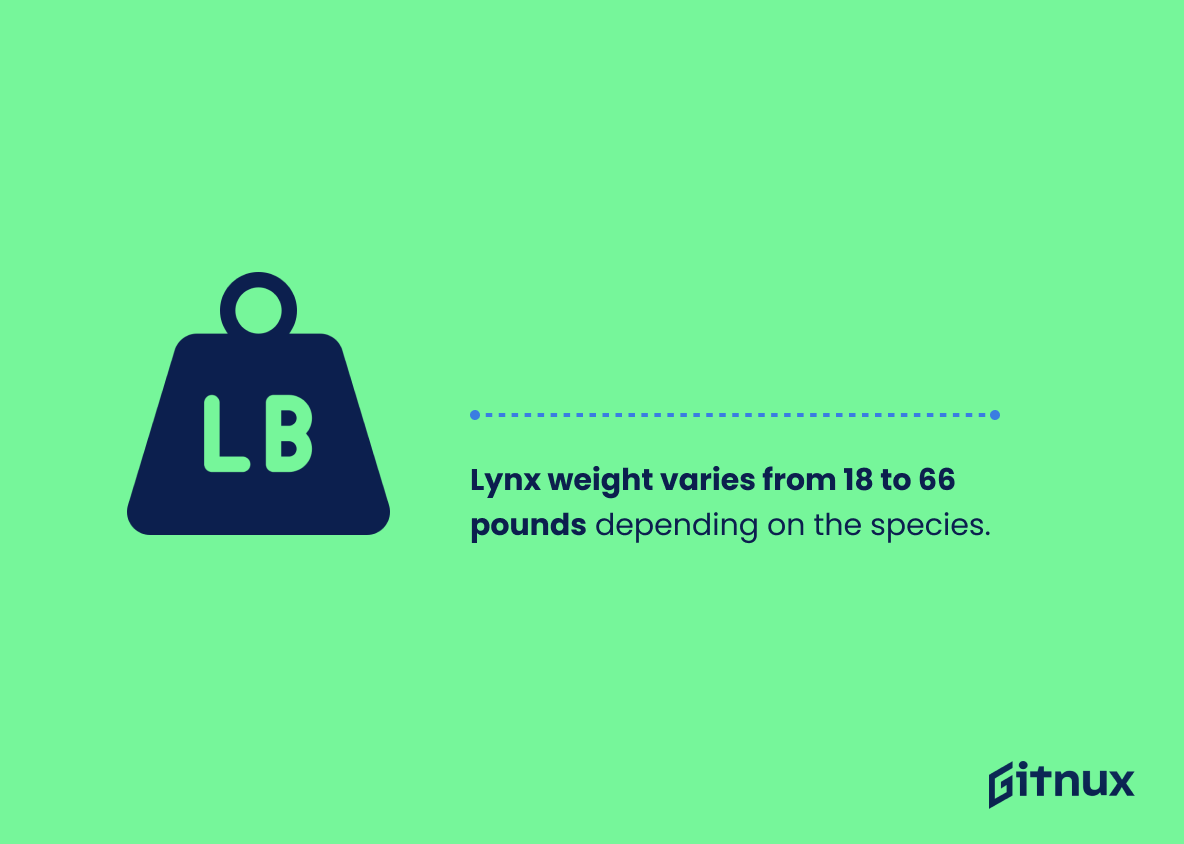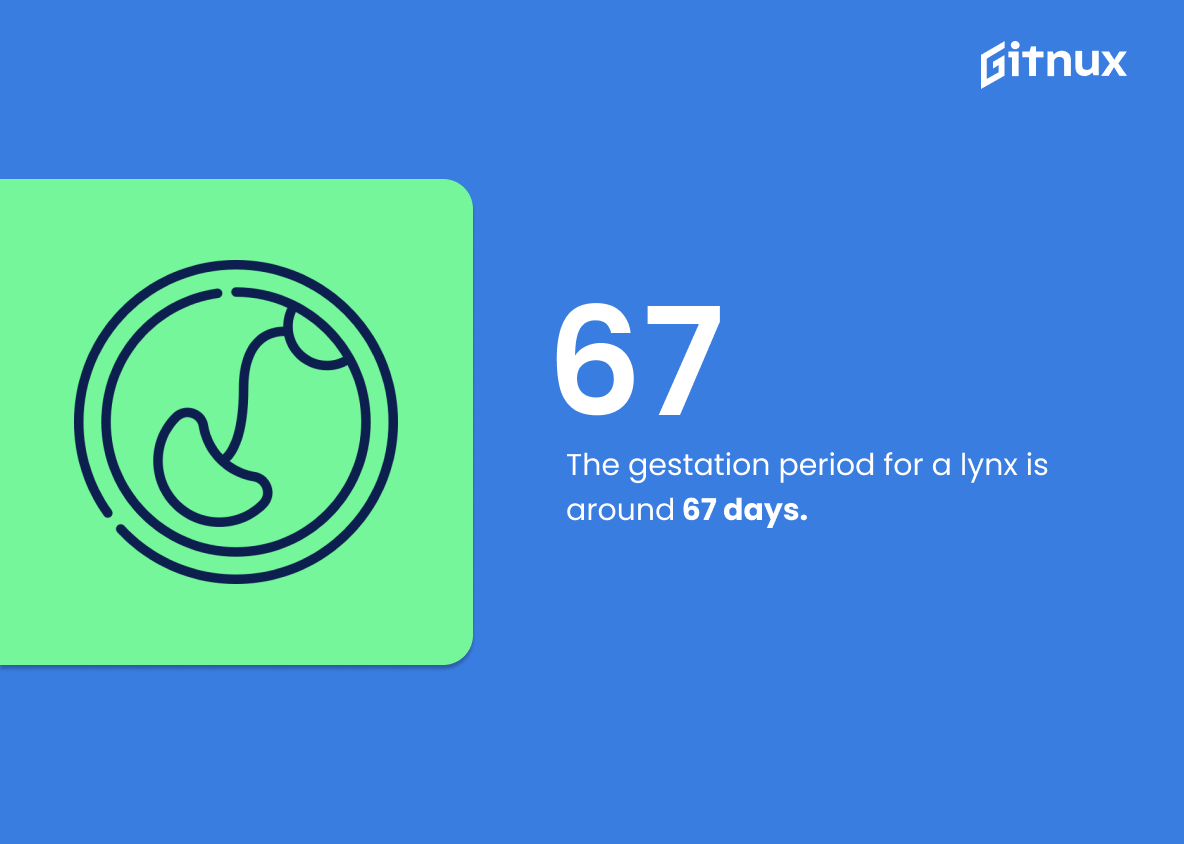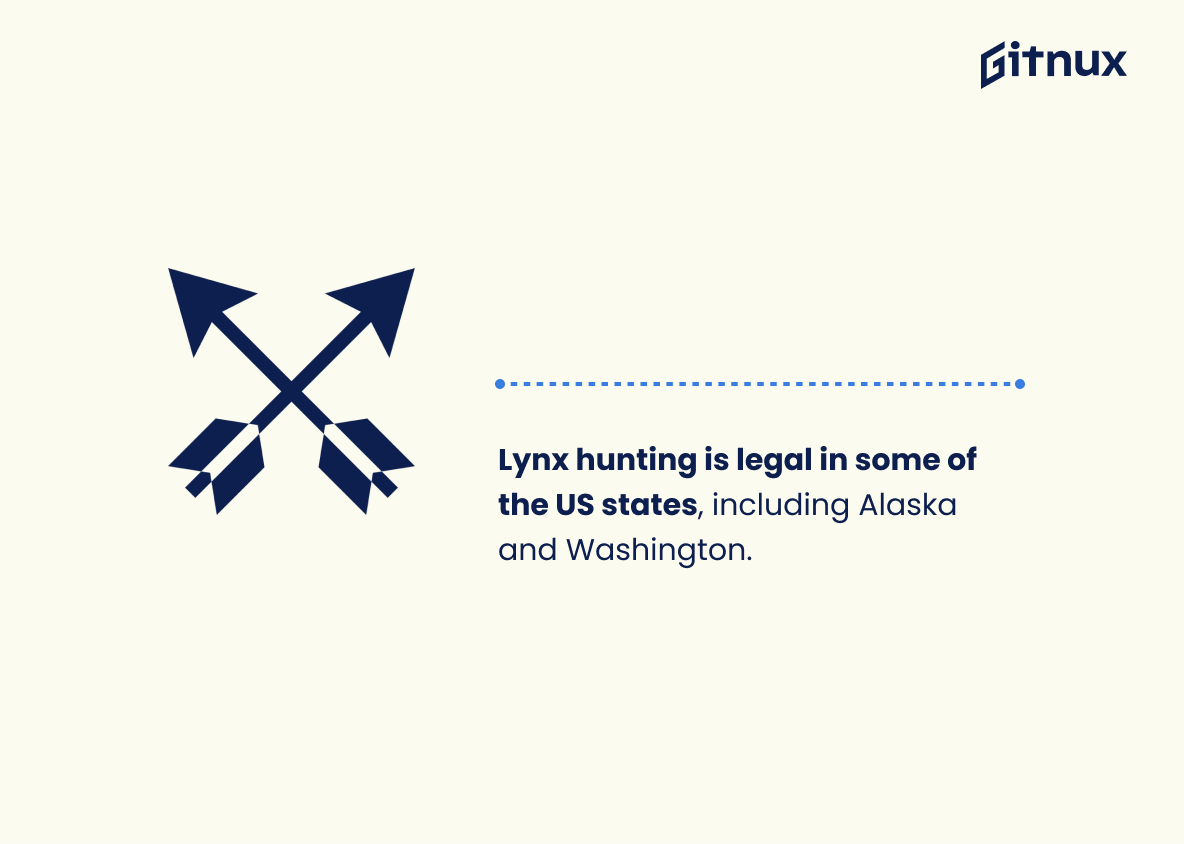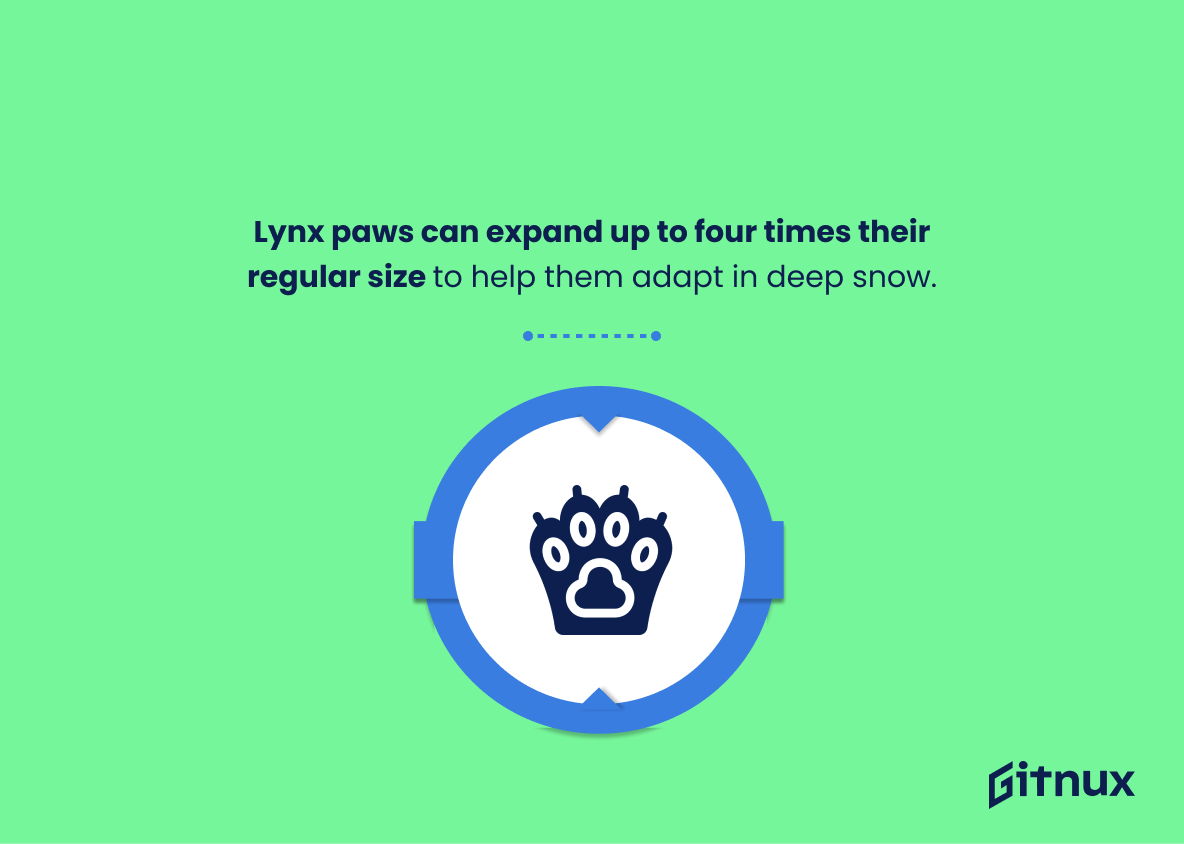The Lynx is a wild cat species that can be found in the Northern Hemisphere. It has been around for thousands of years, and its population numbers have fluctuated over time due to various factors such as hunting and habitat loss. In recent decades, however, conservation efforts have led to an increase in lynx populations across Europe and North America. This blog post will explore some interesting facts about these majestic cats by looking at statistics from reliable sources on their population size, diet preferences, physical characteristics, behavior patterns and more.
This statistic is a testament to the success of conservation efforts in Europe, demonstrating that with the right resources and dedication, species can be brought back from the brink of extinction. It is a shining example of how humans can work together to protect and restore the natural world.
Iberian lynx (Lynx pardinus) population has increased from just 94 in 2002 to 855 individuals in 2019.
This statistic is a testament to the success of conservation efforts for the Iberian lynx. It shows that with the right resources and dedication, it is possible to bring a species back from the brink of extinction. This is an inspiring example of how conservation can make a difference and should be celebrated.
Lynx Statistics Overview
The Canadian lynx (Lynx canadensis) population size fluctuates widely over a period of 10 years, in sync with the snowshoe hare population.
This statistic is a crucial indicator of the relationship between the Canadian lynx and snowshoe hare populations. It demonstrates that the two species are inextricably linked, with the size of one population directly influencing the size of the other. This highlights the importance of preserving both species in order to maintain a healthy balance in the ecosystem.
Eurasian lynx are known to have a preferred prey species: the Roe deer, which constitutes about 69% of its diet.
This statistic is significant in understanding the dietary habits of Eurasian lynx, as it reveals that the Roe deer is the lynx’s primary source of sustenance. This information is essential in understanding the lynx’s behavior and ecology, as well as the impact it has on its environment. Furthermore, this statistic can be used to inform conservation efforts, as it provides insight into the lynx’s dietary needs and the importance of preserving its prey species.
Lynx weight varies from 18 to 66 pounds depending on the species.
The weight of a Lynx is an important statistic to consider when discussing the species, as it can provide insight into the size and strength of the animal. Knowing the range of weights for different species of Lynx can help to better understand the differences between them, and how they may interact with their environment. This knowledge can be invaluable when discussing the conservation of the species, as well as the potential impact of human activities on their habitats.
Lynx have a maximum running speed of 30 to 50 kilometers per hour (18 to 31 mph).
The fact that Lynx have a maximum running speed of 30 to 50 kilometers per hour (18 to 31 mph) is an important piece of information when it comes to understanding the capabilities of these animals. Knowing the speed at which they can travel can help us to better understand their behavior and how they interact with their environment. It can also provide insight into how they hunt and how they evade predators. This statistic is an essential part of understanding the Lynx and their place in the world.
Lynx usually live between 10 to 17 years in the wild.
This statistic is a crucial piece of information when it comes to understanding the life cycle of the Lynx. Knowing the average lifespan of a Lynx in the wild can help us better understand their behavior, habitat needs, and the potential threats they face. It also provides insight into the conservation efforts needed to ensure the species’ long-term survival.
The gestation period for a lynx is around 67 days.
This statistic is an important piece of information when it comes to understanding the life cycle of a lynx. Knowing the gestation period of a lynx can help us to better understand the reproductive habits of the species, as well as the amount of time it takes for a lynx to reach maturity. This knowledge can be used to inform conservation efforts and help ensure the continued survival of the species.
In the 20th century, Eurasian lynx disappeared from at least 10 European countries.
This statistic serves as a stark reminder of the drastic decline of the Eurasian lynx population in Europe over the course of the 20th century. It highlights the need for conservation efforts to ensure that this species does not suffer further losses in the future.
Lynx hunting is legal in some of the US states, including Alaska and Washington.
The fact that Lynx hunting is legal in some US states is an important statistic to consider when discussing Lynx Statistics, as it provides insight into the current state of Lynx conservation efforts. It is essential to understand the legal implications of Lynx hunting in order to assess the impact it has on the Lynx population and the environment.
Iberian lynx was classified as “Critically endangered” in 2002, but its status improved to “Endangered” in 2015.
This statistic is a testament to the success of conservation efforts for the Iberian lynx. It shows that with the right resources and dedication, it is possible to improve the status of a species that was once on the brink of extinction. This is an inspiring example of how conservation can make a difference and should be celebrated.
Lynx kittens typically stay with their mother for about 10 months before becoming independent.
This statistic is an important insight into the Lynx’s family dynamic, as it reveals the amount of time that a mother Lynx will invest in her young before they are ready to venture out on their own. It speaks to the nurturing nature of the Lynx species, and provides a glimpse into the strong bond between mother and kitten.
There are around 1,200 Scandinavian lynx (Lynx lynx) in Norway and 1,250 in Sweden today.
This statistic is significant in the context of the blog post about Lynx Statistics, as it provides a snapshot of the current population of Scandinavian lynx in Norway and Sweden. It is a valuable insight into the current state of the species in these two countries, and can be used to compare the population of lynx in each country and to track changes in population over time.
The litter size of lynx ranges from 1 to 5 kittens, with an average of 2 to 3 kittens per litter.
This statistic is important in understanding the reproductive capabilities of the lynx species. It provides insight into the number of offspring a lynx can produce in a single litter, which can help inform conservation efforts and population management strategies. Additionally, it can help researchers understand the dynamics of the lynx population and how it may be affected by environmental changes.
The population of Canadian lynx in Colorado was successfully reintroduced by 2000, after being extirpated from the state in the 1970s.
This statistic is a testament to the power of conservation efforts, showing that with the right resources and dedication, even species that have been extirpated from an area can be brought back. It is a reminder that with the right actions, we can make a difference in preserving the environment and the species that inhabit it.
Eurasian lynx marks its territory with a scrape and a urine spray, which it repeats every 100 to 200 meters.
This statistic is important in understanding the behavior of the Eurasian lynx, as it demonstrates the animal’s territorial nature. By marking its territory with a scrape and a urine spray every 100 to 200 meters, the lynx is able to establish and maintain its boundaries, ensuring its safety and security.
Lynx paws can expand up to four times their regular size to help them adapt in deep snow.
This statistic is a testament to the Lynx’s remarkable ability to survive in extreme conditions. It demonstrates the animal’s remarkable adaptability and resourcefulness, allowing it to thrive in even the harshest of environments. This is an important reminder of the importance of understanding the unique needs of different species and the importance of preserving their habitats.
Lynx have 28 teeth, including four large teeth called carnassial teeth for slicing meat.
The fact that Lynx have 28 teeth, including four large carnassial teeth, is an important piece of information when discussing the Lynx species. These specialized teeth allow the Lynx to effectively hunt and consume their prey, making them an efficient predator in their environment. This statistic is essential to understanding the Lynx’s place in the food chain and how they survive in the wild.
The lynx’s stride can cover up to 10 feet (3 meters) when running after prey.
This statistic is a testament to the lynx’s impressive agility and speed, allowing it to quickly close the gap between itself and its prey. It speaks to the lynx’s remarkable hunting capabilities, and is a key factor in its success as a predator.
Conclusion
The lynx is a fascinating species of wild cat that has adapted to many different habitats and climates. From the Eurasian Lynx, which has seen its population more than triple over the last 20 years in Europe, to the Iberian Lynx whose numbers have increased from 94 individuals in 2002 to 855 today; it’s clear that conservation efforts are having an impact on this species’ survival. The Canadian lynx also demonstrates remarkable adaptability with its fluctuating population size linked directly to snowshoe hare populations.
Lynxes vary greatly in weight depending on their species, ranging from 18-66 pounds (8-30 kg). They can run at speeds up to 50 kilometers per hour (31 mph) and live between 10-17 years in the wild. Gestation periods for these cats range around 67 days and litters typically consist of 2 or 3 kittens who stay with their mother for about 10 months before becoming independent.
In addition, some subspecies such as those found across Scandinavia have healthy populations while others like Canada’s were extirpated but successfully reintroduced by 2000 due largely through conservation efforts. Hunting remains legal within certain US states including Alaska and Washington though other countries may classify them differently based upon current status – iucnredlist classifies Iberian lynxes as “Endangered” after being classified as “Critically Endangered” back in 2002 .
Overall, there is much still unknown about these elusive creatures yet what we do know paints a picture of incredible resilience despite human interference throughout history – something worth celebrating.
References
0. – https://www.mammaldiversity.org
1. – https://www.worldatlas.com
2. – https://www.cpw.state.co.us
3. – https://www.animals.mom.com
4. – https://www.rewildingeurope.com
5. – https://www.nationalgeographic.com
6. – https://www.adfg.alaska.gov
7. – https://www.worldwildlife.org
8. – https://www.onekindplanet.org
9. – https://www.britannica.com
10. – https://www.worldlandtrust.org
11. – https://www.animalcorner.org
12. – https://www.outdoorlife.com
13. – https://www.livescience.com
14. – https://www.animalogic.ca
15. – https://www.iucnredlist.org
16. – https://www.folgefonni-breforarlag.no
17. – https://www.softschools.com















